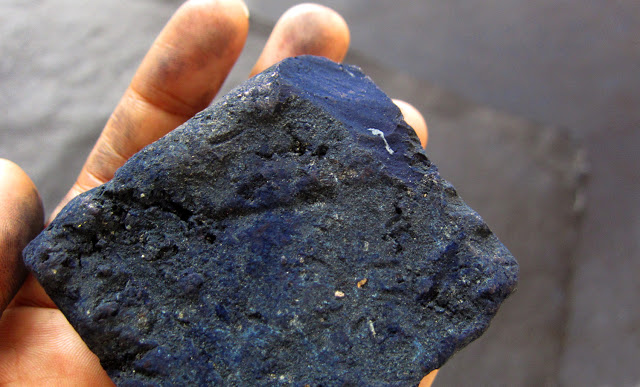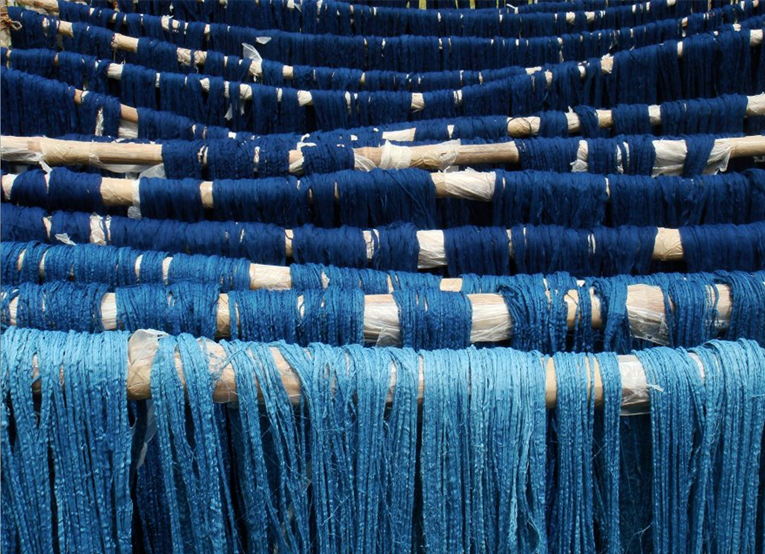Indigo - Blue For You
Natural Indigo is amongst one of the oldest dyes in the world going back to at least the third millennium BC. Many ancient civilisations in countries ranging from India, China, Africa, the Middle East and Japan have used indigo as a dye for centuries. In ancient times, indigo was often referred to as 'blue gold' due to it being seen as an ideal trading commodity, in that it was high value, compact and long lasting.
Indigo dye can be made from numerous plants across the world and more than fifty different species of plant produce indigo in usage quantities. The most natural indigo dye comes from those in the genus Indigofera, with Indigo tinctoria being the most common.
The earliest example of indigo from Indigofera probably comes from the Harappan Civilisation (3300-1300BC) now present day Pakistan and North West India. It is the largest known ancient civilisation which at its peak may have supported a population of over 5 million inhabitants. Centuries ago peasant producers in India formed the indigo dye into small cakes ready for export through trade routes to Europe as early as the Greco-Roman era.
Indigo cake from Gujarat. Image by Radha Pandey
Indigo dyeing tools. Image by Le Ba Ngoc
The association of India with indigo is reflected in the Greek word for dye, indikon (coming from India) later becoming indigo in English. Large scale indigo cultivation, in later years under colonialism and slavery, started in India and along the American Atlantic coast reducing the cost of indigo considerably. By the 19th century, natural indigo production could no longer meet demand and a synthetic alternative was sought. In 1897, the year synthetic indigo was launched, 19,000 tons of indigo were produced from plant sources. This dropped to 1,000 tons by 1914 and continued to contract.
Due to synthetic indigo dyes, the 4000 year old technique of natural Indigo fermentation dyeing had almost been lost in India. In the range of natural dye colours, indigo is a very fast colour and is one of the more appreciated colours in the world. When the yarn is dyed, it is green in colour turning blue when exposed to oxygen. To get varying hues of indigo, multiple immersions of the fabric are required, from 2 to 24 dips to achieve light indigo to blueish black indigo. Even then, being a natural product, the blue that you get depends on where the indigo was grown and the weather at the time.
Natural indigo is a sustainable dye. The fermentation process is the most environmentally sound process for indigo dyeing. It consumes less water than other methods. The water used is stored after each step of the dyeing process and recycled for agricultural use. After the pigment has been extracted the plant residue can be composted and used as fertiliser. In contrast, synthetic indigo dye is extracted from petrochemicals, some materials such as denim using heavy metals such as cadmium, mercury and lead in their multiple chemical washes, ultimately creating hazardous waste across every stage of its production.
Producing natural indigo dye is a labour intensive, environmentally sustainable ancient craft form which produces the most beautiful, indigo blue, handmade textiles. After centuries of existence the indigo dyeing traditions are rapidly disappearing, unable to sustain themselves economically and hence pass on the craft to future generations. Mass production and synthetic dyes are now the norm. In buying products made of handmade natural indigo dyed fabric traditional techniques are kept alive as well as providing for the economic and social welfare of artisans in developing countries.
Vietnamese Hmong Indigo Batik cushions. Image by KeapSake
Vintage Japanese Japanese boro fabrics
Vintage Japanese Noragi Boro Indigo Jacket. Image from Kimonoboy
Hmong Batik and cotton cushions
Indian indigo batik wrapped lampshade. Image by KeapSake








